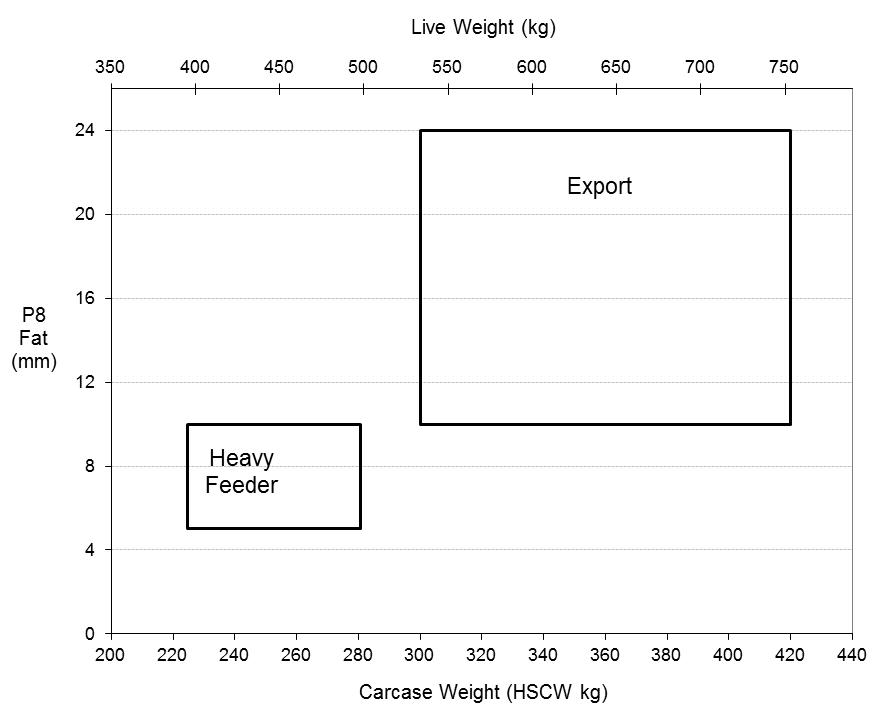1-Know your market specifications

Know your market specifications
A sound knowledge of the specification requirements for particular markets is fundamental to the development of production pathways for your own herd type or genetics.
Well-defined specifications have existed for many years for Australian cattle targeted at particular market endpoints. The primary carcase parameters have been hot carcase weight, age (teeth) and P8 fat depth, with values outside preferred ranges attracting discounts from processors. Carcase grids containing the discounts can be obtained from meat processors.
Other carcase parameters include meat and fat colour, bruising and butt profile. Meat quality is becoming increasingly important as an issue for Australian beef producers in meeting more stringent and changing market specifications.
The development of the Meat Standards Australia (MSA) grading system has shown that domestic consumers can discriminate between beef of differing eating qualities, and that they are willing to pay a premium for higher quality beef.
Intramuscular fat (IMF) has been shown to be positively correlated with improved eating quality (Egan et al., 2001) and minimum IMF% (as assessed by marbling) is now included in some high quality domestic markets. Therefore, producers now have options to produce cattle with a focus on carcase yield, intramuscular fat, or both.
The two charts in Figure 1 show typical store/feeder specifications and final slaughter specifications.


The tools in this module further define beef cattle market specifications and marketing options, and the MLA More Beef from Pastures Confident livestock marketing is a practical workshop designed to assist producers examine the various marketing options.
Use market intelligence to understand market specifications
The only way to understand market specifications and the most cost-effective marketing options for your beef enterprise is by being well informed. Use market intelligence to implement a continuous improvement system by responding to short- and long-term price and market signals.
The National Livestock Reporting Service (NLRS) is an independent market intelligence agency that offers:
- up-to-date livestock market data collected from major prime and store markets
- direct sales and wholesale meat market data
- regular weekly summaries
- slaughter statistics
- skin and hide prices.
By following markets and kwwpinggood records of your sales, you may discern gradual trends and market shifts, thus enabling long-term planning to maximise returns from livestock production.
You should track the factors influencing prices over time, not just current prices, to identify long-term trends and aid decision-making.
Further information
- Information about market specifications on the MLA website
- Information on Meat Standards Australia (MSA) on the MLA website
- Information on National Livestock Reporting Service (NLRS) on the MLA website
- NSW Department of Primary Industries provides information on beef gross margins at www.dpi.nsw.gov.au/agriculture/farm-business/budgets/livestock
